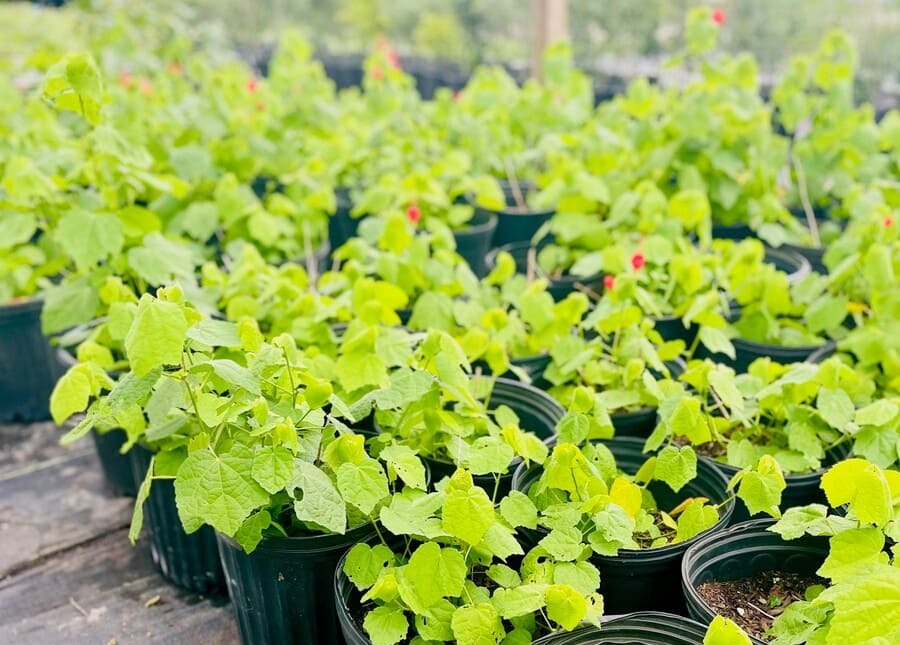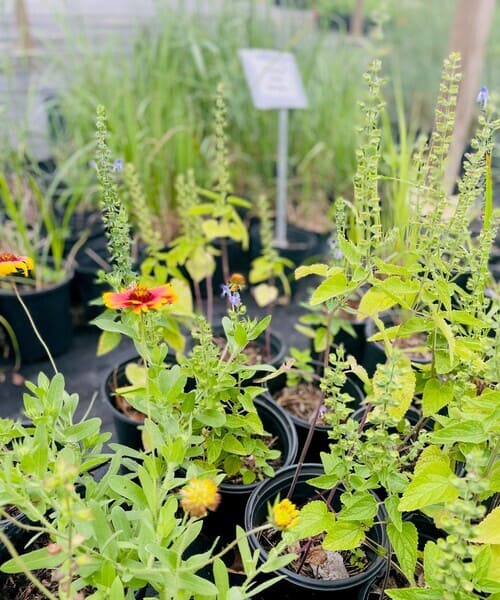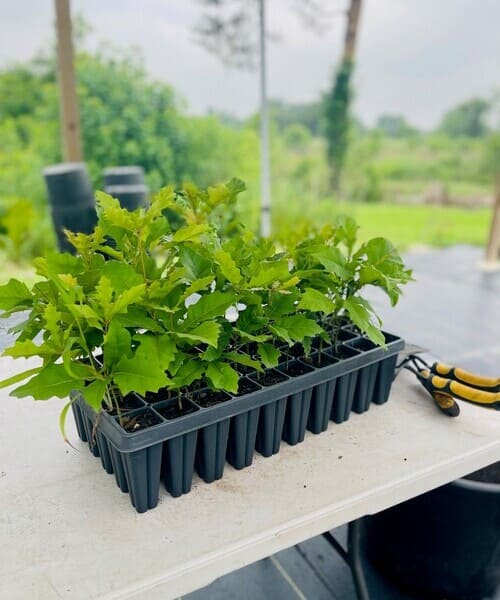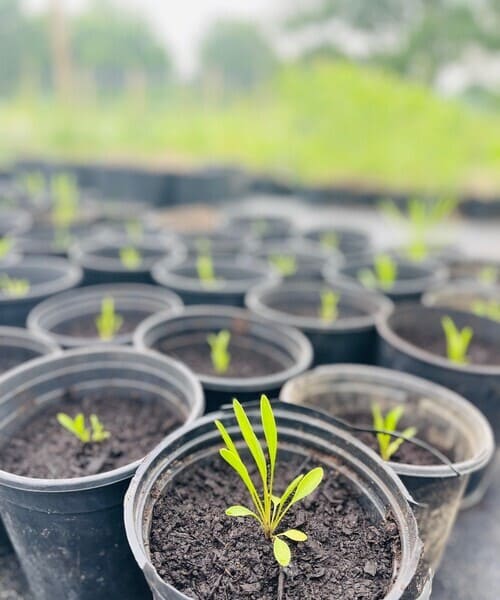As Heat Rises, So Does the Demand for Water.
The Answer… Native Plants.
Texas, known for its expansive landscapes and vibrant culture, also boasts an extremely challenging climate, especially during the scorching summer months. With temperatures frequently soaring well above 100 degrees, water conservation becomes a critical concern for residents. One effective strategy to address this issue and reduce water bills is the incorporation of native plants into landscaping. Native plants, adapted to the local climate and soil conditions, require less water, are more resilient, and offer numerous ecological benefits.

THE TEXAS CLIMATE CHALLENGE
Summers in Texas can be extremely hot and dry, putting water resources under significant stress. Cities like Dallas, Austin, and Houston often experience prolonged periods of high temperatures and minimal rainfall, leading to higher water usage for lawn and garden maintenance. Traditional landscaping with non-native plants often exacerbates the problem, as these plants typically require more water and care to survive the intense heat.
BENEFITS OF NATIVE PLANTS
- Water Efficiency: Native plants are naturally adapted to the local environment, meaning they have evolved to thrive in the Texas’ climate. Native plants have developed deep root systems that can tap into groundwater more efficiently. These adaptations allow native plants to survive and even flourish with minimal irrigation, significantly reducing the amount of water needed for landscaping.
- Reduced Maintenance: In addition to being water-efficient, native plants generally require less maintenance than non-native species. They are less prone to pests and diseases and often do not need fertilizers or pesticides, further reducing gardening and labor cost. This low-maintenance aspect is particularly beneficial during the hot summer months when outdoor work can be uncomfortable and even dangerous due to the extreme heat.
- Resilience to Local Conditions: Native plants are more resilient to local weather patterns, including droughts and occasional heavy rains. Their ability to withstand the natural climate variations in Texas means they are less likely to die off during extreme weather events, providing long-term stability and reducing the need for frequent replanting.
- Ecological Benefits: Beyond the direct financial savings, native plants contribute to the local ecosystem’s health. They provide habitats and food sources for native wildlife, including pollinators like bees and butterflies, which are crucial for maintaining biodiversity. This ecological balance can enhance the overall beauty and sustainability of local environments, creating a more pleasant and healthy living space.



PRACTICAL STEPS FOR INTEGRATING NATIVE PLANTS
- Research and Planning: The first step in incorporating native plants into your landscape is research. Identify which plants are native to your region and understand their growth requirements. Resources such as the Lady Bird Johnson Wildflower Center and local extension offices can provide valuable information and guidance.
- Soil Preparation: Native plants typically thrive in local soil conditions, but it is still essential to prepare the soil properly. Ensure good drainage and amend the soil if necessary to match the needs of the selected plants. This preparation will help establish a robust root system and promote healthy growth.
- Efficient Irrigation Systems: While native plants require less water, it is still important to provide adequate hydration, especially during the establishment phase. Drip irrigation systems are an efficient way to deliver water directly to the roots, minimizing evaporation and ensuring that water is used effectively.
- Mulching: Mulch is a valuable tool in conserving soil moisture, regulating soil temperature, and suppressing weeds. Applying a 1- or 2-inch layer of organic mulch around native plants can further enhance their water efficiency and reduce maintenance efforts.
- Grouping Plants: Grouping plants with similar water and light requirements can optimize irrigation and care routines. This technique, known as hydrozoning, ensures that each plant receives the appropriate amount of water without over- or under-watering.
LONG-TERM FINANCIAL AND ENVIRONMENTAL BENEFITS
Over time, the financial benefits of using native plants in landscaping can be substantial. Homeowners can expect to see a reduction in their water bills as the need for irrigation decreases. Additionally, the lower maintenance requirements translate to savings in time and money spent on gardening services, fertilizers, pesticides, and plant replacements.
In the face of Texas’ hot summers and the increasing need for water conservation, incorporating native plants into landscaping offers a practical and effective solution. By leveraging the natural adaptations of these plants, homeowners can reduce their water bills, minimize maintenance efforts, and contribute to the local ecosystem’s health. The shift towards native plant landscaping not only provides immediate financial benefits but also supports long-term environmental sustainability, making it a win-win strategy for Texas.
